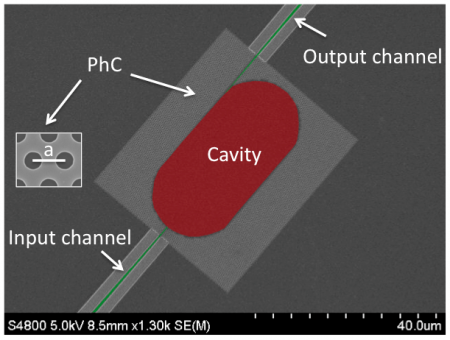In a paper published in Nature Photonics, in collaboration with researchers in KAUST (Saudi Arabia), York (UK) and Bologna (Italy) we demonstrated that chaotic resonators trap broadband light more efficiently than standard ones.
The fabrication of microcavities for monochromatic light is a routine procedure in photonics. The ability to trap light efficiently for long times and in small volumes depends on how well engineered are the channels through which light is in- and out-coupled. For multimodal cavities, different wavelengths are supported by different resonant conditions and typically require specifically tuned channels. This limits the ability to transfer broadband light into a standard resonator.
Here we show that in chaotic resonators different wavelengths (more specifically the lifetime of the different modes of the resonator) are equalised. This means that the optimal condition to couple light is achieved for the same channel design for all the wavelengths.
To demonstrate the equalisation of the resonant modes and the consequent increase in stored energy respect to a non-chaotic system, we resorted to Photonic Crystals (PhC) technology. PhCs are periodic distribution of high refractive index contrast materials, and in this case are used as shaped mirrors with accurately controlled reflectivity. In a scheme similar to fig.1, in our experiments we made PhC cavities with controlled degree of chaos, and characterized their behavior with a statistical technique developed by us in a previous paper.

It should be noted that the result obtained is very general, and can be transferred also to very simple resonators, with important consequences for its application. For example, we recorded a marked increase of light absorption by simply deforming polymeric spherical resonators.